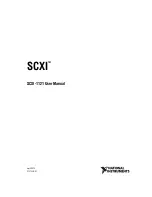
17
The input channels 4…13 are used to read
binary signals other than circuit breaker and
disconnector status information. The binary
signals can be external contact signals or internal
binary signals, e.g. starting and tripping signals
of protective relay modules. For the definition
of internal and external signals see chapter
"Intermodular control signal exchange" in the
user´s manual of the feeder terminal.
The status of the binary inputs 4…13 can be
read via the serial bus. The status of the input
channels 4…9 is also indicated locally by LEDs
on the front panel. A LED is lit when the
corresponding input becomes active and the
LED is switched off when the corresponding
input becomes inactive.
Each input channel can be defined to be active
at high state or at low state by using parameter
S2. The high state activity means that an input
is considered to be active if there is a voltage
connected to the corresponding external input
or if a protective relay module has activated its
output signal. Low state activity is the opposite
to high state activity. As a default all the inputs
are active at high state.
The following features are related to input chan-
nels 4…13:
- Events are formed by status changes
- The channels can be used to activate the
OPEN or CLOSE output pulse
- The channels can be used to inhibit the OPEN
or CLOSE output pulse
- The channels can be used to activate one of the
outputs SIGNAL1…3
- The channels may be included in the inter-
locking program logic
- The channels may be included in the Condi-
tional Direct Output Control logic
- Channel 7 can be used as an energy pulse
counter, see chapter "Scaling of measure-
ments".
When using an input channel one signal output
(SIGNAL1…3) and one control output (OPEN
or CLOSE) can be activated simultaneously.
Accordingly one signal output can be activated
and one control output inhibited simultane-
ously. The output to be activated or inhibited is
defined by parameters S3 and S4.
The position of the R/L keyswitch is without
significance when the control outputs (OPEN
or CLOSE) are controlled via inputs 4…13, but
a check with the blocking logics is always made
before a control action.
If an input channel is defined to control a signal
output, the output is activated as long as the
input is active. The length of the opening and
closing pulse is defined by the SPA bus variables
V5 and V6 respectively and they are not de-
pending on the input pulse length.
Example 10: Programming of input 8. The
programming can be done in the run mode.
>99W8S2:1:XX
; Define input 8 to be active at high state
>99W8S3:22:XX
; Configure input 8 to activate the SIG-
NAL1 output
>99W8S4:20:XX
; Configure input 8 to activate the OPEN
output pulse
>99WV151:1:XX
; Store the programmed parameters
Fig. 13. Operation of outputs SIGNAL1 and
OPEN when input channel 8 in example 10 is
activated.
If an input channel is used for inhibiting a
control command the opening or closing of an
object is inhibited as long as the input is active.
If the interlockings are out of use (S199=0), the
input channels 4…13 cannot be used to inhibit
the OPEN and CLOSE outputs.
If the input 7 is operating as an energy pulse
counter, it cannot be used for other purposes. As
a default the input channels 4…13 are operating
in a general input mode, but are not activating
or inhibiting any outputs.
Input channels
4…13
NOT ACTIVATED
ACTIVATED
NOT ACTIVATED
ACTIVATED
ACTIVATED
NOT ACTIVATED
INPUT CHANNEL 8
SIGNAL1 OUTPUT
OPEN OUTPUT
Defined by V5















































